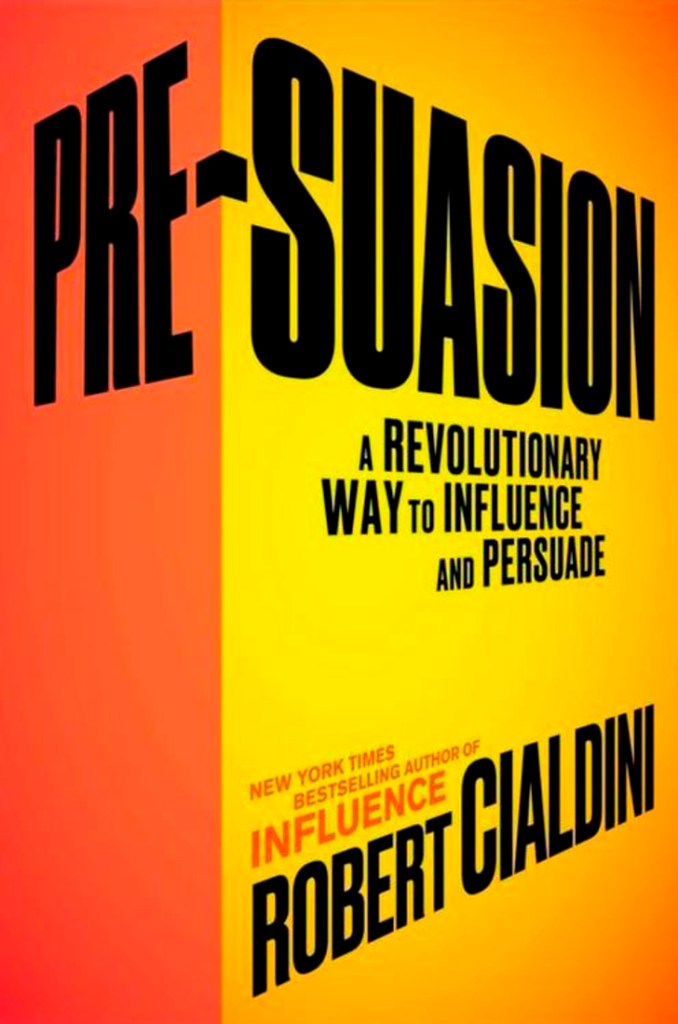‘Pre-Suasion’ offers interesting concepts, techniques
Published 1:00 am Sunday, January 1, 2017

- sunread_book_PRE010117
“Pre-Suasion: A Revolutionary Way to Influence and Persuade” by Robert Cialdini. New York: Simon and Schuster, 2016. 432 pages, $28.
“In the English language, we are said to ‘pay’ attention, which plainly implies that the process extracts a cost,” Robert Cialdini explains near the beginning of “Pre-Suasion: A Revolutionary Way to Influence and Persuade,” his latest attempt to help us be more effective at furthering our agenda across a wide spectrum of personal and professional endeavors. “Research on cognitive functioning shows us the form of the fee: When attention is paid to something, the price is attention lost to something else. Indeed, because the human mind appears able to hold only one thing in conscious awareness at a time, the toll is a momentary loss of focused attention to everything else. Have you ever noticed how difficult it is to experience – genuinely experience – two things at once? …
Trending
“The best we can do to handle multiple channels of information is to switch back and forth among them, opening and closing the door of mindfulness to each in turn,” the author continues a little later. “This skill allows for multitasking, the ability to focus on several activities in the same time frame – perhaps talking on the phone while reading an email message. Although it might seem that we are concentrating on more than one thing simultaneously, that’s an illusion. We are just rapidly alternating our focus.”
I readily admit that I tend to be fascinated by this kind of cerebral foray into how we think, although I am much more interested in the practical applications that tend to stem from this kind of discourse as opposed to the academic insights that naturally arise when reading an exploration of this type. Toward this end, I am happy to report that virtually everything Cialdini covers in this exquisite volume can be utilized almost immediately in the ongoing quest many of us have to be more in control over the challenging situations most of us encounter at work and in life on a daily basis. Arriving at a result that has been predetermined to be desirable for ourselves as well as those we serve can be elusive if we do not know how to influence others.
“Pre-Suasion” is one of the most extensively researched books I have ever had the opportunity to read, with 92 pages of references and an additional 68 pages of source notes at the conclusion of the 14 chapters that comprise the main text. The manuscript is arranged in three major sections: “Pre-Suasion: The Frontloading of Attention” consists of the first six chapters; “Processes: The Role of Association” is made up of the next three chapters; and “Best Practices: The Optimization of Pre-Suasion” encompasses the last five chapters. For an intellectual, Cialdini’s prose is exceptionally accessible. Anyone with a rudimentary understanding of the science on which much of the book is based should have no problem following his observations, inferences and conclusions as well as the logic that binds them together in such a forceful manner.
In 1984, “Influence: The Psychology of Persuasion” solidified Cialdini’s reputation as an authority in the area of social psychology. An international best-seller, that blockbuster broke new ground by codifying his model of the six components essential for influencing others: reciprocity (returning a favor), commitment and consistency (taking ownership), social proof (doing what others are doing), authority (following orders), liking (how we feel about others) and scarcity (limited availability increases demand). In the current follow-up to that seminal contribution, Cialdini takes his theory one step further by discussing an often-overlooked consideration when attempting to convince others to pursue a particular course of action: setting the appropriate stage for the upcoming negotiation.
Interestingly, when asked why it took him so long to return to the subject matter that made him famous, he responded with “I didn’t want to plant a set of bushes around the tree that is ‘Influence.’ I wanted to plant another tree.” Contrast that with many authors who seem all too eager to cash in on their previous success in the publishing realm by putting out every conceivable variation on their original theme; “The Seven Habits of Highly Effective Families” immediately comes to mind. On this front, I commend Cialdini. He has indeed planted another tree.
In addition to his duties as president and CEO of Influence at Work, an international consulting firm, Cialdini is also regents’ professor emeritus of psychology and marketing at Arizona State University. He has degrees from the University of Wisconsin, the University of North Carolina and Columbia University and has served as a visiting scholar at Ohio State University, the University of California, the Annenberg School of Communications and the Graduate School of Business of Stanford University. His previous books, which have sold more than 3 million copies in 33 languages, include “Influence: The Psychology of Persuasion,” “Influence: Science and Practice” and “Yes!: 50 Scientifically Proven Ways to Be Persuasive,” which he co-wrote with Noah J. Goldstein.
Trending
One of the features of the narrative I especially enjoyed was his use of historical case studies to illustrate how famous decisions have been swayed by employing the overall strategy and individual techniques he meticulously dissects on page after page. These include the defeat of the Spanish Armada by Queen Elizabeth I in 1588, the successful introduction of the Volkswagen “Bug” to the U.S. market by the advertising firm of Doyle Dane Bernbach in the 1950s and the brilliant negotiating tactics of Kim Man-bok, the head of South Korea’s national Intelligence Service, who successfully negotiated the release of 21 South Korean aid workers who had been taken hostage by the Taliban in 2007.
In case you have not already surmised, “Pre-Suasion” contains some pretty interesting concepts and techniques, along with vivid instructions for how they can be used to great effect. Cialdini helped me to see how the world often works in an entirely new light. If you are interested in learning more about how to influence others, you might want to pick up a copy.
— Reviewed by Aaron W. Hughey, Department of Counseling and Student Affairs, Western Kentucky University.






